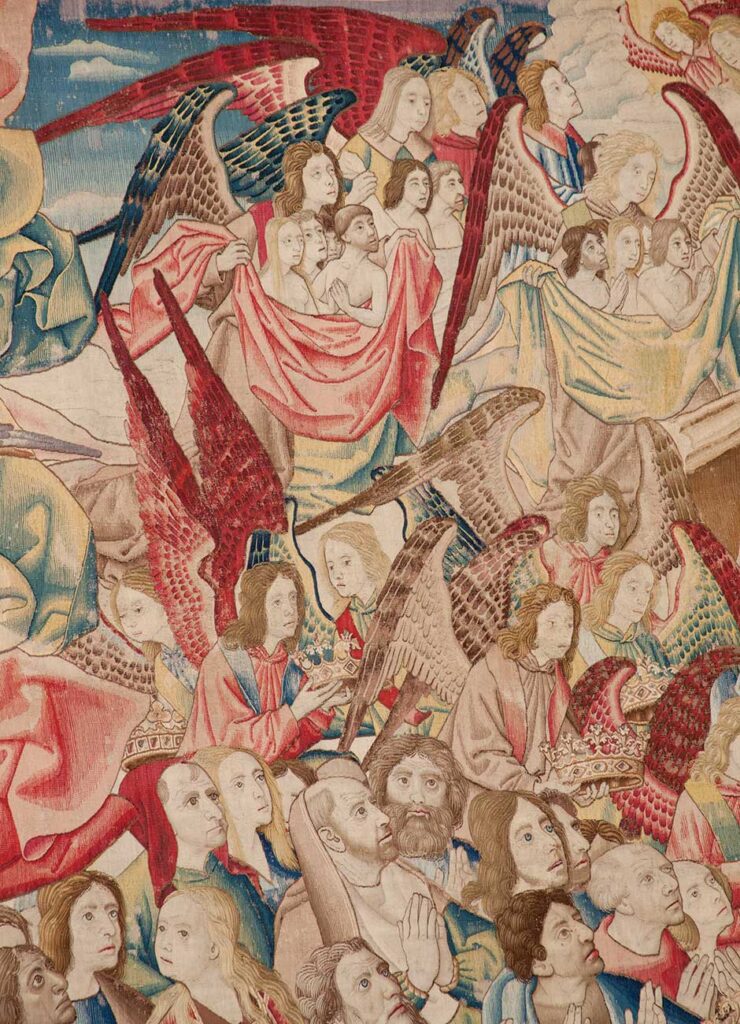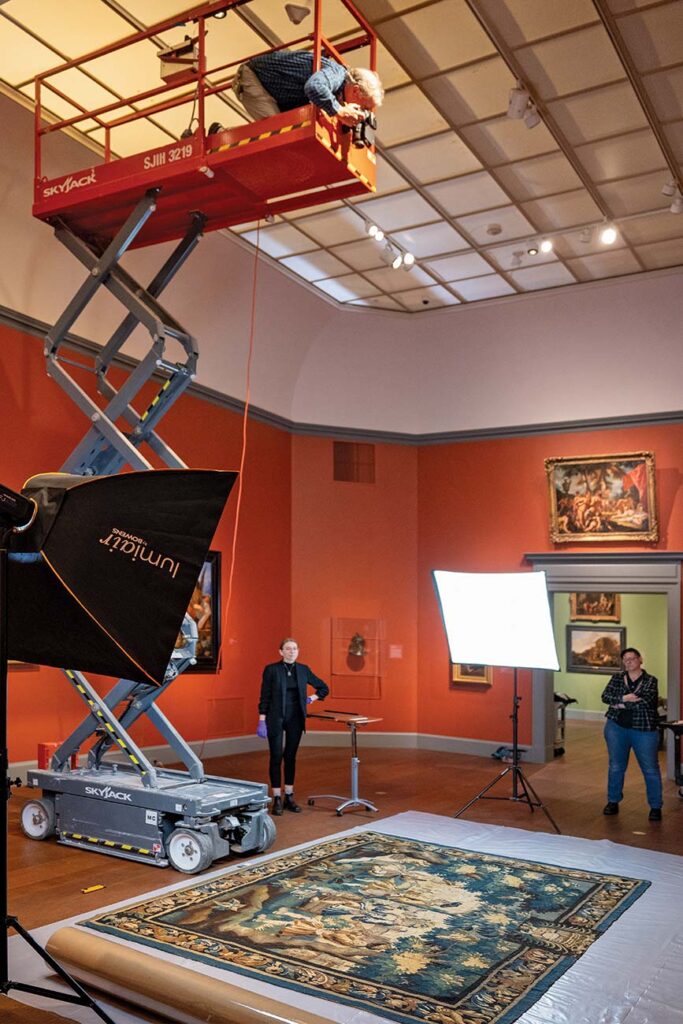By Delaney Keenan, Assistant Curator of European Art

The Worcester Art Museum has been collecting tapestries for over one hundred years, but due to their fragile nature, sensitivity to light, vulnerability to shifts in temperature and humidity, and large size, they have rarely been on view in recent decades. Mounting our current exhibition, From the Vault: Collecting Tapestries at the Worcester Art Museum, required significant preparation to ensure the safety and longevity of these works. Last August, we brought over two dozen tapestries out of storage to survey their condition and determine which could be displayed in our exhibition. The Museum’s in-house conservation team worked with Camille Myers Breeze at Museum Textile Services to evaluate each tapestry’s condition and its ability to be displayed.
After a full survey, we developed a diverse checklist of works spanning different cultures and time periods that would appear in From the Vault. When evaluating which tapestries could be displayed, condition was always the top priority and decisions were made with attention to structural stability and safety of the works. We determined that six tapestries would travel to the Museum Textile Services workshop in Andover, Massachusetts, for surface cleaning, structural stabilization, and new conservation-quality hanging hardware. While not all of the tapestries could be on view in the exhibition, nearly every work is illustrated in the associated catalog.
Enjoy more articles like this in access, the Museum’s Member magazine. Members receive year-round free admission, tickets to events, and more.
Photographing this collection was a major undertaking. An interdepartmental group of curators, preparators, conservators, registrars, and photographers collaborated to coordinate logistics, move tapestries out of storage, unroll and reroll the weavings, and take photos from high above on a scissor lift. Using the largest floor space available to us at the time, we turned Gallery 201 on the Museum’s second floor into our photography studio. After covering the space with clean plastic, we unrolled one tapestry at a time for imaging. The setup included four studio lights artfully angled to illuminate the tapestries as a photographer rose to the top of the room to shoot the images. Dubbed the Tapestries Digitization Project, this work gave us the opportunity to publish high-resolution, color photography of many of these tapestries for the first time ever in both a catalog and our online Collections Database. We are pleased to be able to share these magnificent works with visitors to the exhibition as well as scholars, curators, and audiences around the world.
The associated catalog, available in the Museum’s shop, features images and new research on over two dozen tapestries in the Museum’s collection.

This article was featured in the spring/summer 2025 edition of the Worcester Art Museum’s access Member magazine.
From the Vault: Collecting Tapestries at the Worcester Art Museum, May 3–July 27, 2025
Stay connected! Sign up for the Worcester Art Museum’s email newsletter.

